Shadow Tactics: Blades of the Shogun review – commandos gone samurai
18 years – this much time has passed since the release of the first Commandos. Today, in Shadow Tactics, its spirit returns along with the magic of isometric tactical stealth games – they were difficult, a bit rough around the edges, but also fun to play.
The review is based on the PS4 version. It's also relevant to PC, XONE version(s).
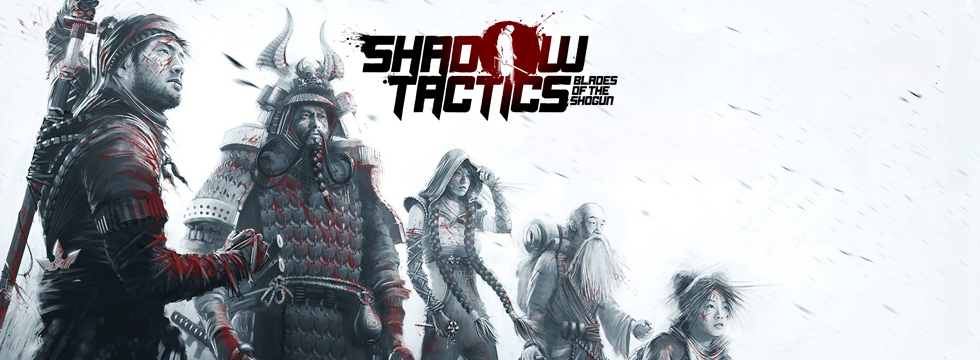
- Terrific and difficult gameplay;
- Excellent depiction of feudal Japan's oriental aura;
- Good level design;
- Well-matched skill sets of the team members;
- Comfortable controls and interface;
- Several paths leading to an objective.
- You can issue only one command in Shadow Mode;
- Strict division into separate missions, without any tasks connecting them or meta-game elements;
- Scripting and weak enemy AI;
- Long initial loading time of levels, unless you have an SSD.
Early 17th century Japan – a world of intrigue, ninjas, and shurikens flying thick and fast. It is hard to imagine a better setting for a production aiming to breathe new life into a venerable fossil from the upper Paleozoic of gaming – the tactical RTS (or RTT) genre. Said family of games was born in 1998, at a time when good old Pentium II rigs were squeezing the last juices out of their 233 MHz cores, and the static charge of CRT monitors could lift small objects from our desks. Commandos: Behind Enemy Lines was the first game of a kind in which we observed the battlefield from a bird's eye view and commanded a group of British SOF operatives, carrying out undercover missions behind the frontlines of World War II. Despite having great future prospects, three successful continuations and two decent imitators, the genre didn't stand the test of time.
As the era began to favor rapid development of 3D graphics and the general trend turned towards simplifying games rather than demanding more from the players, the rather difficult and not very spectacular isometric stealth games lost the support of developers. All the more surprising that after so many years a budding developer studio manages to successfully reawaken this seemingly unpopular segment of the market. And yet here they are, swift as wind, silent as forest, fierce as fire, elusive as shadow – commandos in new clothes are lurking in the shadow once again.
Over their dead bodies
In Shadows Tactics: Blades of the Shogun, we take command of a five member team of special agents in service of the military ruler of feudal Japan. Soon, however, it becomes clear that the peace and prosperity under the rule of our dear sovereign doesn’t sit well with some individuals, as the country is soon torn by a rebellion led by the mysterious Kage-same. Over the course of thirteen campaign missions, we are sent in to infiltrate enemy encampments, dispose of prominent opponents and try to unravel the mystery of the main villain's identity.
The essence of the game is to complete the mission objectives without being detected and raising an alarm, as it usually ends in our disgraceful defeat. This, in turn, means that we have to sneak around security guards and keep our eyes peeled to the green cone that indicates their field of vision; what’s more, the elimination of enemy soldiers needs to be quick, quiet and leave no trace. While we observe the action from isometric view, the environment is fully three-dimensional, and the camera can be freely rotated, which is the first significant improvement when comparing the game to the old classics. Orders are issued mainly using a "point and click" mechanic, well known to all fans of RTS, and we can rely on keyboard shortcuts as well.
Shadow Tactics faithfully walks in the footsteps of its master, the Commandos series. The main gameplay premise, as well as its numerous details, is based on the same design philosophy, only adapted to fit a different historical setting. As in the original, our actions need to be carefully planned, and the following execution is nothing more than the culmination of minutes of careful observation and puzzling out the way for everything to work. The tasks are difficult and force us to precisely coordinate our team members, but finding effective solutions to problems is the chief source of satisfaction in this game. What's more, the devs did a great job balancing the missions, making it rare for the player to be stuck on something for a long time, which in turn ensures the right gameplay rhythm. Admittedly, the team at Mimimi Productions has managed to recreate most of the strong points of the mechanics employed by Commandos, and at the same time add quite a number of new solutions, making Shadow Tactics a joy to play.
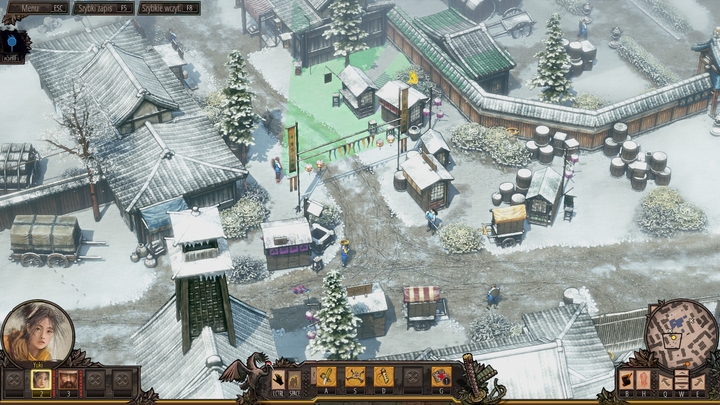
The highly-enjoyable gameplay of Shadow Tactics, in addition to the aforementioned mechanics, encompasses many other important elements. Among them, the pragmatic approach to controls deserves a separate round of applause. The quick save option, a nigh-indispensable feature in this genre, allows you to keep several saved games at a time, and reload any of them at will, definitely saving a lot of your time.
One more good idea is the introduction of a feature called the Shadow Mode, in which we can plan the actions of our team members, allowing us to execute our commands in the correct order by using a convenient action panel and hotkeys. With this tool, it will be easy to plan and carry out truly spectacular combinations, which would be impossible to synchronize manually. Acting as a group, our agents can, for example, simultaneously jump down from a roof straight onto the head of an opponent while backstabbing another one and taking out the third one, which could've noticed all of these actions and raised an alarm, with a well-aimed shuriken to the throat. All of that achieved in no more than a second of real time. It is a pity, however, that while in Shadow Mode each member of the team can only be assigned one action. This limitation is especially painful when, after a successful mass takedown, we need to quickly evacuate all the characters and corpses to avoid being spotted by an incoming patrol.
A short history of RTT games
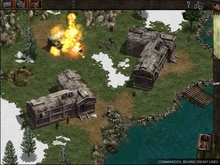
The release of Commandos: Behind Enemy Lines in 1998 was the beginning of the franchise's 8-year-long history. The game's first mission – attack on a radio station in Norway – remains one of my fondest gaming memories up to this day. In 1999, the adventures of commandos operative Jack O'Hara and his companions were expanded by a standalone add-on, Beyond the Call of Duty, and in 2001 the series saw the release of a full-fledged sequel subtitled Men of Courage. The third installment in the series, released in 2003, was entitled Commandos 3: Destination Berlin. Officially, the series lived to see a fourth installment; however, Commandos Strike Force simply wasn't what the series used to be, ending up as a shoddy FPS that disgraced the series in the eyes of many before dragging it down to the bottom.
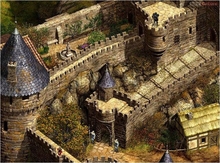 The gameplay formula employed by Commandos, however, was already given a new life at that time, and a pretty decent one, in the historical setting of the games from a new developer. In 2001, Spellbound released a tactical western – Desperados: Wanted Dead or Alive, and a year later, using the same engine, Robin Hood: The Legend of Sherwood. Both titles were very climatic and enjoyed considerable popularity.
The gameplay formula employed by Commandos, however, was already given a new life at that time, and a pretty decent one, in the historical setting of the games from a new developer. In 2001, Spellbound released a tactical western – Desperados: Wanted Dead or Alive, and a year later, using the same engine, Robin Hood: The Legend of Sherwood. Both titles were very climatic and enjoyed considerable popularity.
On the shogun's secret service
Characters in our team are very diverse, and their skills were matched so that each member of the team serves a different role during a mission. Hayato is a classic ninja – agile and equipped with a deadly shuriken, Mugen – a powerful samurai, very proficient with the sword, Yuki – a clever thief, luring her enemies into automatic traps, Takuma – a sniper, eliminating enemies from a distance, and finally Aiko – a geisha, is able to safely walk right in the middle of the enemy camp when in disguise. Unfortunately, we have no influence over which characters will take part in each mission.
In addition to specific roles, each team member also has a place in the storyline and unique character traits that come to light during the numerous dialogues taking place during the missions. Most noticeable among them is the character of Yuki, a more or less 10-year-old girl, met by Hayato when she was trying to rob a weapon shipment. The little thief has arguably the best skill set to eliminate the basic type of opponents, so in the course of my game she spilled enough enemy blood to fill an Olympic pool. Listening to her comments in which she explains her killings using what is basically a child's understanding of the world, and the high praise of her murderous skills coming from her companions, I felt somewhat disturbed... But I assume that for those familiar with the unique clichés and tropes of anime and manga, it will be hardly a novelty.
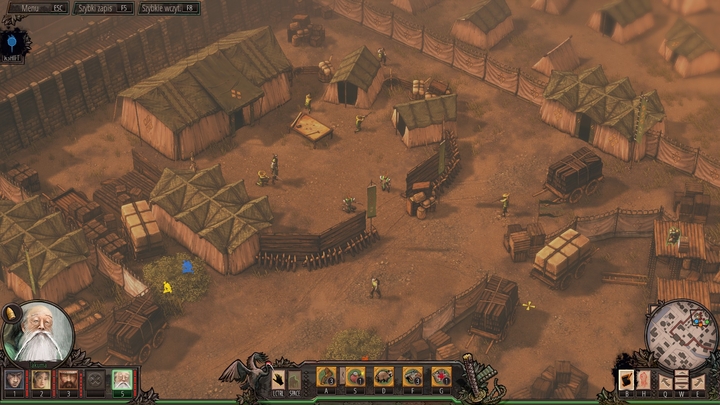
While the storyline in Shadow Tactics is hardly original, it does the trick as a good justification for the actions of our shinobi. The story is divided into thirteen separate missions, each of which can be completed in about 2 hours without too much hurry. These complex tasks, although clearly related to each other, are simply selected from a list in the menu. In this aspect the creators should have departed from the archaic design of the first Commandos and implemented some metagame fragments to connect all the major episodes. Even Robin Hood: Legend of Sherwood had us manage our hideout and sending companions on secondary missions. Such a solution, of course suitably polished and without irritating repetitions, should have also been implemented in Shadow Tactics to extend and enrich the gameplay, not to mention allowing the game to fully realize its potential.
With barely over a dozen missions, some interesting skills of the characters are used literally once or twice during the entire game. There's plenty of room here for some additional in-between missions – shorter, simpler, and played out on smaller maps – for example, an assassination of some secondary officer. What's more, without a system to manage the development of our team, it doesn't matter one bit how we complete the objective. It's hard to find any reason to stun enemies instead of killing them or save civilians – the only thing we may miss by being merciful will be some insignificant Steam achievement.
In the Land of the Rising Sun
Maps in Shadow Tactics are varied and their phenomenal Japanese aura is enthralling. We have an autumn castle bathed in the afternoon sun, rice fields drowning in the rain, a majestic mountain monastery and villages lit up at night with colored lanterns. To give the game a vibe of a traditional Japanese painting, a cel-shading filter was applied. Still, the fact that the game leaves a wonderful visual impression should be first and foremost attributed to the artistic craftsmanship of the graphic designers, and not the technological values of the production. From a distance everything looks perfect, but as we zoom in and take a closer look, the small number of details, particularly in the case of character models, becomes more and more apparent. In addition, limited magnification of the maximum zoom prevents us from being able to closely observe the conduct of our subordinates, burying any hopes we may have had for enjoying satisfying replays of our best actions. Character animations appear to be quite nice, at least in so far as they can from such distance, but their pool is far too limited in relation to the number of possible scenarios. This leads to bizzare situations such as when an enemy attacked on the side obediently turns his back to the killer to let himself get spectacularly slashed by a katana.
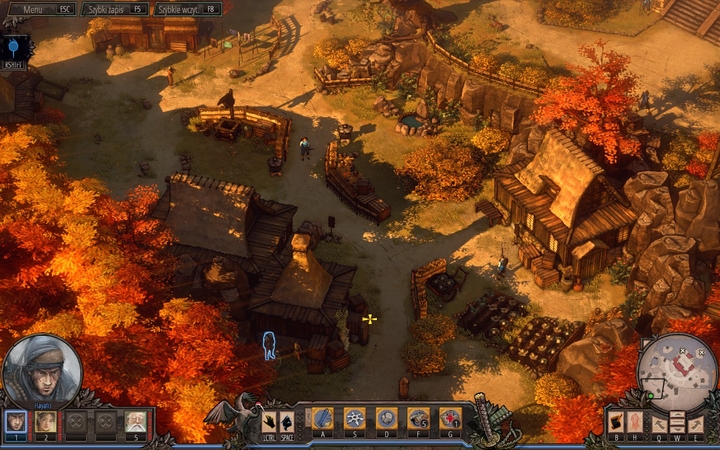
Level design is good, and most importantly, allows us to reach the goal in several different ways. Although the authors suggest some of the solutions to the player, nothing stands in the way of doing things our own way. There are also interactive objects scattered across the levels, but their use is usually obvious, and boils down merely to dropping heavy objects on the heads of our enemies. It is a pity that you can't use the elements of the environment to craft some more sophisticated lethal combinations.
The guards patrolling the maps tend to be very predictable in their behavior. It must be so, however; otherwise no planning would be possible in the sea of unpredictable random variables. Still, the devs could have provided at least some margin of variety to avoid the impression of the enemy being wind-up toys. Unfortunately, nothing of that kind happened, and our opponents remain nothing more than scripted puppets. A short anecdote to illustrate my case – we have Aiko openly tampering with a wooden crane, seconds later a pile of logs falls on the head of a samurai standing beside it. The guards write it off as an unfortunate accident, and Aiko retreats unsuspected, because... she was dressed as a maidservant.
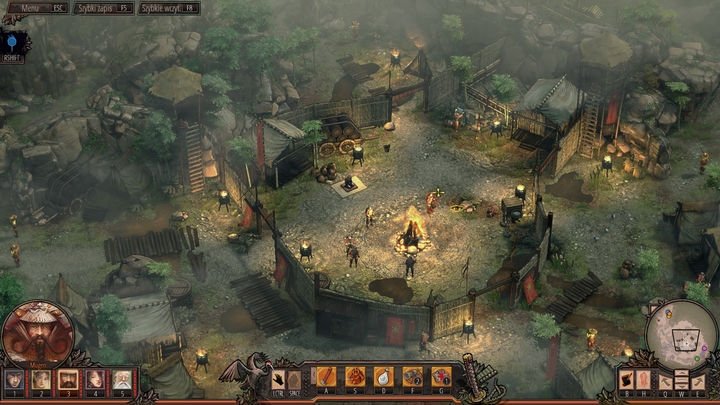
Honor and glory
Shadow Tactics: Blades of the Shogun has done a great job at resurrecting a long-forgotten genre. Its addictive and difficult gameplay provides a worthy challenge for the fans of the Commandos series, and when on lower level of difficulty, it can also introduce newcomers to the RTT genre. Great atmosphere, interesting characters, beautiful backgrounds, Japanese dubbing and very nice soundtrack are the additional advantages of the title, which is bursting with potential and loudly calls for being let out of the narrow framework of a handful of campaign missions. I hope that the many qualities of Shadow Tactics will translate into commercial success, and soon we will see another installment, or at least a sizeable DLC, only this time deprived of the several major flaws. Who knows, maybe other developers, encouraged by the work of Mimimi Productions, will dare to dust off some interesting ideas from the past?
I've spent 25 hours+ playing Shadow Tactics: Blades of the Shogun in its sole available game mode – single player campaign. My first encounter with the Commandos series was in elementary school, but, since I’m a fan of the Medieval times, my RTT of choice remains Robin Hood: The Legend of Sherwood.
The copy of Shadow Tactics: Blades of the Shogun used for the purpose of this review was provided free of charge by the Polish publisher of the game – Techland.
Shadow Tactics: Blades of the Shogun
18 years – this much time has passed since the release of the first Commandos. Today, in Shadow Tactics, its spirit returns along with the magic of isometric tactical stealth games – they were difficult, a bit rough around the edges, but also fun to play.

